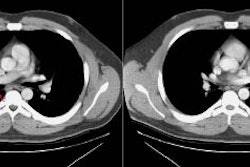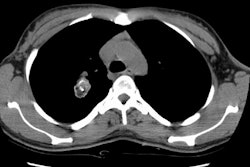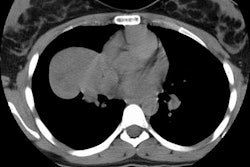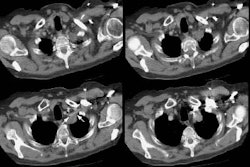Oncologic diagnosis with 2-[fluorine-18]fluoro-2-deoxy-D-glucose imaging: dual-head coincidence gamma camera versus positron emission tomographic scanner.
Shreve PD, Steventon RS, Deters EC, Kison PV, Gross MD, Wahl RL
PURPOSE: To compare the performance of a dual-head single photon emission
computed tomographic (SPECT) Anger camera operated in coincidence mode
with that of a dedicated positron emission tomographic (PET) scanner in
the imaging of cancer with 2-[fluorine-18]fluoro-2-deoxy-D-glucose (FDG).
MATERIALS AND METHODS: Thirty-one patients with known or suspected malignant
neoplasms underwent imaging with both methods, and the images were read
blindly. Diagnostic performance on a lesion-by-lesion basis was compared
with attenuation-corrected PET as the standard of reference. RESULTS: Of
a total of 109 discrete lesions depicted at PET, 60 (relative sensitivity,
55%) were identified on the coincidence-mode images. Of the nodules or
masses depicted at PET, 13 (93%) of 14 lung nodules or masses, 20 (65%)
of 31 mediastinal lymph nodes, five (71%) of seven lesions in the neck,
five (55%) of nine axillary lymph nodes, 11 (50%) of 22 bone metastases,
and six (23%) of 26 abdominal tumor deposits were correctly identified
on the coincidence gamma camera images. CONCLUSION: These preliminary findings
indicate FDG imaging with a modified dual-detector gamma camera operating
in coincidence mode can depict many of the lesions depicted with a PET
scanner, particularly in the lungs. Sensitivity for lesions detected at
dedicated FDG PET was poor in the abdomen and in all locations outside
the lungs for tumor deposits generally less than 1.5 cm in short-axis diameter.



